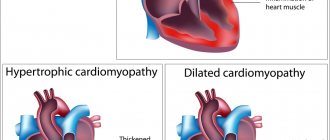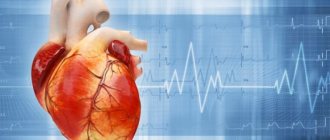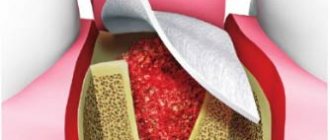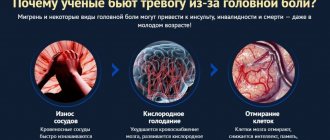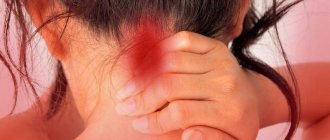In modern laboratories, dozens of different tests can be performed, which help evaluate many processes in the body and play a huge role in the diagnosis of most diseases. According to statistics, 70% of decisions made by doctors are based on laboratory test data.
Over the past decades, laboratory diagnostics have become very accurate, but, unfortunately, sometimes the test results are erroneous. And it's not always the laboratory's fault. The preanalytical stage and proper preparation of the patient play a huge role. This is where about half of the mistakes occur. The result is distorted results, incorrect conclusions, incorrect treatment and unnecessary additional diagnostic methods.
One possible cause of errors in laboratory diagnostics is lipemia , a condition in which there are high levels of lipids in the blood. It occurs in 1–5 samples out of 200 received by the laboratory, and is much more common in outpatients than in inpatients. The main reason is that patients do not maintain the required interval between the last meal and blood donation. Unfortunately, not everyone knows how to properly take tests on an empty stomach, and doctors do not always explain well and cannot control the situation.
| A brief excursion into biochemistry: what are blood lipids? Fats and fat-like substances (cholesterol, triglycerides, phospholipids) are combined under the term “lipids”. By themselves, they cannot dissolve in water, so they are found in the blood plasma in the form of complexes with proteins - lipoproteins. There are several types of lipoproteins, they differ in composition, size and functions:
Lipemia refers to the cloudiness of a blood sample due to high levels of lipoproteins. |
Causes
In healthy people, triglyceride levels range from 0.55-1.65 mmol/l. This range of values is due to an increase in blood lipids after eating and the restoration of their concentration after some time. This is the so-called biological variation associated with metabolic processes occurring in the body. Physiological causes of lipemia also include the age of the patient. It has been officially proven that the concentration of simple fats in the blood increases significantly every 5 years. A value of 2.3 mmol/l is considered the maximum permissible. Higher values are a sign of disease.
The causes of chyle are excessive intake of fatty foods into the body and insufficient absorption of triglycerides by tissues. Similar processes can occur both in the body of healthy people under the influence of certain factors, and in people with severe somatic pathology.
Diseases that lead to the development of serum chylosis:
- Disorders of lipid metabolism caused by endocrinopathies - dysfunction of the pancreas and thyroid glands, excessive accumulation of fat in the body.
- Damage to liver hepatocytes caused by alcohol or viral intoxication and occurring in the form of hepatitis, cirrhosis, fatty hepatosis.
- Kidney dysfunction - nephrotic or nephritic syndrome, deterioration or cessation of organ function.
- Hereditary predisposition to lipemia.
- Pathology of lymphoid tissue.
Chylosis is not a separate, independent nosology. Secondary hypertriglyceridemia is a manifestation of serious diseases:
- atherosclerotic processes,
- cardiovascular and respiratory failure,
- hypertension,
- inflammation of the joints,
- bronchial asthma,
- acute pancreatitis,
- some genetic abnormalities
- thalassemia,
- glycogenosis.
Such pathological processes require a comprehensive examination of the patient and a set of therapeutic procedures.
Factors contributing to the development of triglyceridemia: severe stress, increased levels of calcium or glucose in the blood, anorexia nervosa, hyper- or hypocoagulation, pregnancy, taking certain medications - diuretics, corticosteroids, beta-blockers. Chylosis can be provoked by alcohol abuse, fatty and fried foods, fast food, and smoking.
To accurately determine the cause of chylosis, it is necessary to prepare for donating blood, strictly following all medical recommendations. Pathology is often detected visually. In laboratory conditions, using modern equipment, the lipemia index is automatically determined. Errors in performing blood tests can lead to the development of weak chylosis.
Indications for the study
Analysis is prescribed in the following cases:
- The appearance of health complaints soon after a sore throat or skin lesion, if there is reason to believe that the cause of their appearance is a previous streptococcal infection. Usually the test is prescribed 2-3 weeks after the illness. The value of the test increases significantly if it is performed several times at intervals of about 2 weeks. In this case, the dynamics of the results makes it possible to most reliably assess the patient’s condition.
- Treatment of complications of streptococcal infection. The analysis is prescribed by the doctor 7-14 days after the start of treatment in order to assess its effectiveness and, if necessary, adjust the previously prescribed therapy.
Symptoms
Chylosis has no characteristic symptoms. It is detected incidentally and is considered a diagnostic finding. The clinical picture of lipidemia depends on the causative disease. General manifestations of the disease are associated with obesity, metabolic disorders, and liver dysfunction. They are so insignificant that patients simply do not notice changes in their well-being.
In cases of lipid metabolism disorders, the following manifestations are observed:
- increase in the volume of subcutaneous fat,
- poor exercise tolerance,
- dyspnea,
- increased appetite,
- hypertension,
- weakness, loss of strength,
- hyperhidrosis,
- swelling of tissues,
- sleep disorder
Liver diseases are manifested by common symptoms:
- heaviness and pain in the right hypochondrium,
- dyspepsia - nausea, heartburn, vomiting, belching,
- asthenia - lethargy, apathy, impotence, lack of appetite,
- jaundice – itching of the skin, changes in the color of urine, stool, sclera and skin,
- abnormal stool, flatulence, discomfort and rumbling in the stomach,
- hepatomegaly.
Thyroid dysfunction is clinically accompanied by:
- swelling of the limbs and puffiness of the face,
- burning, tingling, myalgia, stiffness and weakness in the hands,
- dry skin, brittle nails and dull hair, hair loss,
- lethargy,
- weight gain,
- hypothermia,
- constant chilliness,
- deterioration of memory and attention,
- insomnia or drowsiness,
- bad mood, melancholy, depression,
- bradycardia, arterial hypertension,
- headache.
It is these clinical signs that force the patient to see a doctor. Chylosis is discovered accidentally during blood tests.
Consequences of lipemia
If chyle occurs once, it is considered harmless. The detection of chylous blood several times in a row indicates a severe pathology.
Failure to take the signs of dysmetabolic processes seriously can lead to occlusion of blood vessels, lymphadenitis, and breakdown of red blood cells. These disorders underlie deadly diseases. Persons with chylosis are susceptible to the development of atherosclerosis and its complications - strokes, heart attacks, thromboembolism. In the absence of timely and correct treatment, they develop nutritional obesity and the functioning of the endocrine glands is disrupted.
deposition of fats in the walls of blood vessels with a combination of chylosis and provoking factors, the development of atherosclerosis
In addition, chyle is not just a manifestation of various pathologies and dysfunction of internal organs. This deviation does not allow a full examination of the patient and a biochemical blood test. As soon as fats are detected in it, the study is stopped. Chylous serum is rejected, and the patient is offered to re-donate blood after treatment.
What is blood chyle?
Chylosis is a term used to describe a blood condition. In order to understand it, you must first understand the specifics of the biochemical blood test.
The subject of biochemistry is plasma or serum - the liquid component of blood, separated from the main elements in a laboratory centrifuge. In order to identify the quantity and quality of various substances in its composition, certain reagents are used. Normally, the serum is translucent and has a yellowish tint. But sometimes it becomes thick and almost white, which vaguely resembles sour cream. That's when they talk about chylous blood.
This anomaly is characterized by an increased amount of neutral fats in the blood. These fats in the blood are called triglycerides. Their supply is constant normally and is consumed by the body only in case of an emergency when there is not enough energy. That is, in normal mode, triglycerides in the blood constantly circulate in the form of lipoproteins (a type of complex protein), and, if necessary, participate in the metabolic processes of the body.
But for some reasons their volume increases significantly, thereby making a biochemical blood test impossible, since the reagents do not affect the condensed serum.
Causes of blood chyle
If we turn to the question of what blood chyle is, as well as the mechanism of its occurrence, then with correct therapy, we can avoid problems with the body in the future.
Blood chyle is not a disease, but a kind of symptom of problems in the body, or a sign of non-compliance with the rules before taking the test. It is distinguished by the degree of fat content - weak (moderate) or strong.
Article on the topic:
What does elevated blood triglyceride levels indicate in adults? Causes and symptoms.
An increase in triglyceride levels appears due to impaired fat metabolism, first of all. Then they talk about lipemia or hyperlipemia, that is, an anomaly that is characterized by chylosis.
Fats, as components of some foods, a person can consume in unlimited quantities. Typically, fats entering the stomach, under the influence of digestive processes, begin to break down into fatty acids and glycerol, and then into smaller components.
Once in the intestines, these substances begin the reverse process of connection. Here they are absorbed and redistributed throughout the tissues of internal organs; some of the triglycerides remain in the blood. With excess triglycerides, they begin to be deposited in the abdomen, thighs, buttocks, and then move to the parenchyma of internal organs.
Fatty blood can form for the following reasons:
- Endocrine diseases. Hormonal imbalances, for example, diabetes, pancreatitis, hypothyroidism, will lead to increased fat formation.
- Kidney and liver diseases. Alcoholism, as a mental disorder that adversely affects the urinary system, will affect the condition of the blood.
- Disorders of the lymphatic system, coagulation and blood formation.
- Cardiovascular pathologies. These include atherosclerosis, myocardial infarction, thrombosis.
- Inflammatory processes in bone, cartilage and connective tissues.
These pathologies are both a cause and a consequence of chyle.
Since neonatologists often notice chylosis in infants, a hereditary factor in the development of the anomaly cannot be ruled out. In this case, the amount of triglycerides will be several tens of times higher.
Fatty blood is one of the signs indicating Down syndrome. Provided that cholesterol levels are normal, fatty blood indicates bronchial asthma.
Tests for blood chylosis
In most cases, blood chylosis only indicates that the patient has neglected the conditions of an effective study. The content of triglycerides varies throughout the day, the largest amount is observed 20-3 minutes after a meal, the smallest, and therefore reliable, after 10-12 hours after the last meal.
If on the eve of going to the outpatient clinic a person experienced a strong emotional stress, and even more so ate prohibited foods in the evening and in the morning, the blood test will be uninformative.
An evening dose is not recommended before biochemical tests:
- alcohol-containing products;
- fatty, smoked, salted;
- vegetable oils;
- eggs;
- dairy products;
- bananas
Article on the topic:
What do elevated platelets in women indicate? Causes, symptoms and treatment
In the morning or 12 hours before taking a biochemical blood test, eating is contraindicated.
When chyle is first detected, a repeated blood sample is required, but this time in compliance with all conditions. If the blood condition is confirmed, immediate treatment is required.
Diagnostics
If the cause of chyle is inadequate preparation for the test, treatment is not carried out. Eating disorders on the eve of the study are one of the main factors that distort the results. All other cases require an individual approach. Therapists, as well as specialists in the field of endocrinology, cardiology, hematology, and arthrology, carry out therapeutic and diagnostic measures.
The choice of treatment tactics depends on the diagnostic results and the general condition of the patient. Specialists talk with the patient, examine him, and send him for laboratory tests. Lipidogram is a comprehensive study of lipid metabolism. It consists of a biochemical blood test for cholesterol, triglycerides, and lipoproteins of various classes. Clinicians, having received the results of the analysis, pay attention not just to the digital values of triglycerides, but also to all other indicators that confirm or refute possible health risks. A lipidogram is prescribed to persons suffering from hypertension, diabetes, alcohol and nicotine addiction. It is recommended to donate blood for testing to anyone who is overweight and leads a sedentary lifestyle. Diagnosis of triglyceride values for people over 20 years of age is carried out at least once every five years.
division of fats into fractions in a lipid profile
How to treat chylosis
If chylosis is spontaneously detected, the doctor recommends donating blood again, following the rules before the test. First of all, do not eat fatty foods at least 12 hours before coming for the procedure. In a situation where lipemia is confirmed, further diagnostic measures are prescribed. Therapy is selected based on the results of hardware studies. Chylosis may be a hallmark of the following serious diseases:
- Gouty changes in the joints.
- Arthritis.
- Inflammation of the pancreas.
- Pathologies of the blood coagulation system.
- Atherosclerotic disease.
- Hereditary hyperlipidemia.
- Chronic stress.
- Chromosomal diseases, such as Down's disease.
Initially, it is recommended to follow a low-fat diet in the presence of blood chylosis. Try to remove fatty meats, sweet baked goods, white bread, and carbonated drinks from your diet. The main thing is that targeted therapy for the underlying disease, which is accompanied by chylosis, is selected.
Treatment
To cope with chylosis, it is necessary to identify and eliminate its cause. Individual therapy is also aimed at preventing possible complications and preventing further progression of the process.
- Diet therapy is the basis of therapeutic measures, because food is the source of fats entering the body. With proper nutrition, you can reduce the content of simple lipids in the blood. Fatty meat and fish, baked goods, eggs, confectionery delicacies, alcohol, marinades, and smoked meats are excluded from the diet of patients. It is necessary to eat more fresh fruits and vegetables, berries, herbs, fish, seafood, cereals, beans, and nuts. Products of plant origin contain many vitamins and fiber, which improves fat metabolism. Tomatoes, pomegranates, oranges, and spices have a beneficial effect on blood composition. A diet for chylosis involves replacing high-calorie and fat-containing foods with dishes with healthy ingredients. Nutritionists recommend eating stewed, boiled and steamed foods, completely excluding fried foods. It is better to replace coffee and tea with juices and compotes, simple mineral water. Strict adherence to the diet quickly normalizes the general condition and increases the effectiveness of complex treatment.
- Medications intended for the treatment of chylosis improve the functioning of internal organs and normalize metabolism.
- To thin thick blood, patients need to follow a certain drinking regime - drink as much liquid as possible, unless there are contraindications for health reasons.
- Hirudotherapy is an excellent way to cleanse the blood, make it more fluid, strengthen the walls of blood vessels and increase systemic blood flow. With the help of leeches, you can significantly lower cholesterol levels, saturate tissues with oxygen and improve the permeability of capillaries. The enzymes found in their saliva have a general strengthening effect.
- Sports exercises and long walks will help cope with this problem. A healthy and active lifestyle without smoking and alcohol speeds up the healing process of patients.
- Folk remedies that allow you to “cleanse” the blood are garlic-dill tincture, raspberry-currant tea, flaxseed oil, meadowsweet infusion, cranberry juice.
Diet therapy, medications and folk remedies must be used in combination in order to obtain a lasting and effective result as quickly as possible.
Medicines used to treat chylosis:
- Antioxidants that improve blood supply to vital organs, inhibit oxidative reactions and reduce the risk of deposition of fatty components on the walls of blood vessels - Actovegin, Mildronate, Riboxin;
- Fibrates that accelerate the excretion of triglycerides and lower the concentrations of certain categories of lipids in biological fluids - “Clofibrate”, “Fenofibrate”;
- Statins that regulate cholesterol status and have a hypolipidemic effect - “Lovastatin”, “Cardiostatin”;
- Hepatoprotectors that restore liver function - “Phosphogliv”, “Essentiale”;
- B vitamins and “Nicotinic acid”, which normalize lipid metabolism, promote the synthesis of semi-saturated acids and the removal of cholesterol compounds from the body;
- "Metformin", which regulates the lipid profile of the blood plasma, reducing the content of triglycerides and cholesterol.
To determine the effectiveness of the treatment, it is necessary to resubmit the biomaterial for examination after a course of therapeutic treatment.
photo: patient's blood before and after treatment
Prevention
Experts recommend paying close attention to your health and getting timely treatment. To prevent serious health problems, it is necessary to follow preventive measures. These include:
- rational and balanced nutrition,
- full physical activity,
- fight against bad habits,
- walks in the open air,
- strengthening the immune system.
Blood chylosis in young children is a contraindication for vaccination. Vaccination given to a child with pathology can lead to severe allergies, including anaphylactic shock. Specialists remove the medical duct only after complex treatment and a decrease in the level of triglycerides in the blood.
Chylosis is easier to prevent than to treat its consequences, which have a negative impact on the functioning of the entire body and the quality of human life. Basic preventive measures can reduce the risk of developing many pathological conditions, including lipemia.
What is chylosis and why is it dangerous in a blood test?
It is immediately worth noting that this term does not hide a specific disease, but an increase in the level of triglycerides, which normally should be completely absent. Chylous serum can be detected in a person of any age, activity and gender.
Blood chyle is a pathological condition when a large number of fatty particles are found in the composition of this biological fluid, complicating the diagnostic process. Triglycerides are neutral fats, and blood containing them, during laboratory analysis after centrifugation, becomes like sour cream - white and very thick.


